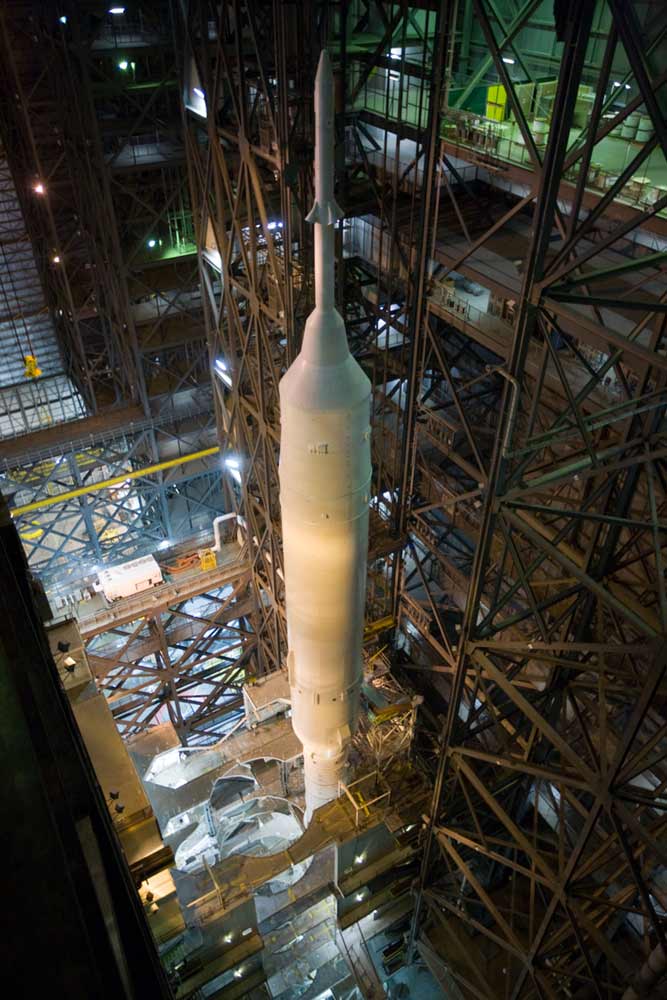White House Panel's Human Spaceflight Report Due Soon

WASHINGTON? With an expert panel?s final report on options for U.S. human spaceflightexpected to be released the week of Oct. 19, NASA and White House officials aresaid to be coalescing around the idea of sending astronauts on deep spacemissions to near-Earth objects and potentially the moons of Mars.
A draftversion of the final report, requested in April by the administration ofU.S. President Barack Obama, is circulating within the White House and NASA.
?Thequestion now is funding,? said one administration official who has seen thedraft report.
Led byformer Lockheed Martin chief Norm Augustine, the White House-appointed panelconcluded in a summary report delivered Sept. 8 that unless the United Statesis prepared to eventually add up to $3 billion a year to NASA?s budget, theagency has little hope of sending people beyond lowEarth orbit for decades to come. NASA?s current exploration strategy callsfor developing a space shuttle replacement system by 2015 and returning to the moonby 2020.
TheAugustine panel included the space shuttle replacement program ? featuring the OrionCrew Exploration Vehicle and Ares I rocket ? among the five optionsdetailed in the summary report. But other options would scrap elements of thatprogram, and one of these, dubbed ?flexible path? focuses not on returning tothe moon but rather on sending astronauts on asteroid rendezvous and Mars flybymissions.
?That is anattractive option within NASA,? the administration official said.
Anotheradministration official asserted that options that include returning astronautsto the moon ?are not sellable to the public or to the president.?
Get the Space.com Newsletter
Breaking space news, the latest updates on rocket launches, skywatching events and more!
Several ofthe options in the summary report would rely on outsourcing astronaut transportto the International Space Station to the private sector. This approach isfavored by entrepreneurial space companies seeking a larger share of NASA?sbusiness but opposed by those with a larger stake in Orion and especially AresI, which are part of a wider program dubbed Constellation.
?What?sreally at stake inthe short-term is Ares I, and all of this push for commercial crew I wouldthink is viewed as an alternative to a government-run program like Ares I,?said John Logsdon, a space policy expert professor emeritus at the GeorgeWashington University here. ?Long-term, it?s whether in fact there is going tobe a meaningful space exploration program beyond the International Space Station.?
The Ares Iis based on the space shuttle?s giant solid rocket motors built by AlliantTechsystems of Edina, Minn. Alliant Techsystems is the lead contractor on Ares I.
Sources inthe administration and on Capitol Hill say it remains to be seen when or howthe White House responds to the report. But sources both within theadministration and close to it say an increase along the lines suggested by theAugustine panel is being weighed. Such an increase would add almost $1 billionto the space exploration budget in 2011, ramping up to about $3 billionannually by 2014.
?I thinkthe $3 billion figure has been widely misunderstood,? Logsdon said. ?The actualproposal from the Augustine committee is a gradual increase to that level overfour years through 2014, with only a little less than $1 billion proposed fornext year.?
Congressionalsources say lawmakers are anxiously awaiting the administration?s response tothe Augustine panel?s final report, though some question whether Congress wouldsupport the flexible path exploration option.
Augustinewas pressed during a September congressional hearing to offer acompelling reason to abandon NASA?s current exploration program rather thanfund it at a higher level, for example.
However,the Augustine panel indicated during public meetings held over the summer thatin order to keep Constellation on track for a first flight of Ares 1-Orion by2015 and a return to the moon by 2020, NASA would need a total of $50 billionabove current projections over the next decade.
?If youreally want to do Constellation and keep it on the current schedule, or closeto it, that?s what you?re looking at,? one administration official said.
- Video - NASA's Ares I-X Test Flight Unveiled
- Video - Back to the Moon with NASA's Constellation
- Video Show - NASA's Vision for Humans in Space
Join our Space Forums to keep talking space on the latest missions, night sky and more! And if you have a news tip, correction or comment, let us know at: community@space.com.
Amy Klamper is a space reporter and former staff writer for the space industry news publication SpaceNews. From 2004 to 2010, Amy covered U.S. space policy, NASA and space industry professionals for SpaceNews. Her stories included profiles on major players in the space industry, space policy work in the U.S. Senate and House of Representatives, as well as national policy set by the White House.









